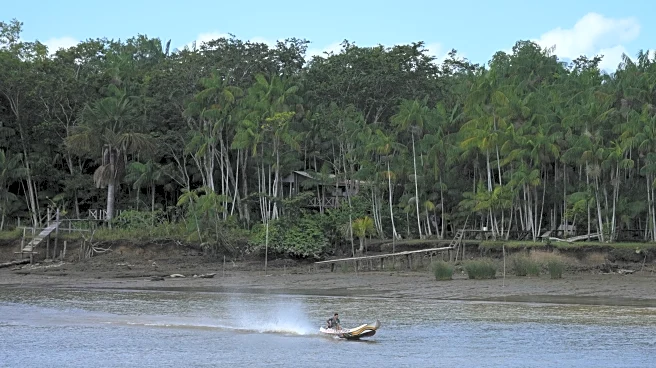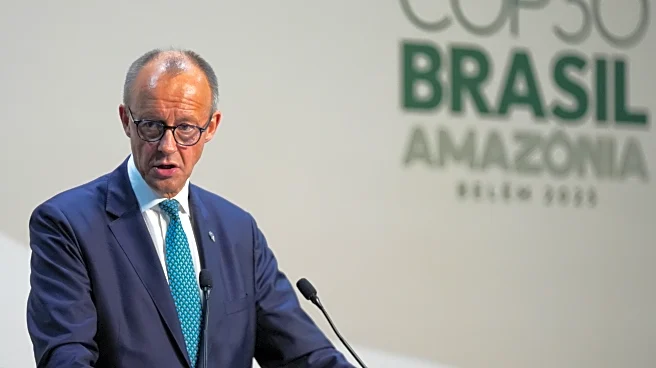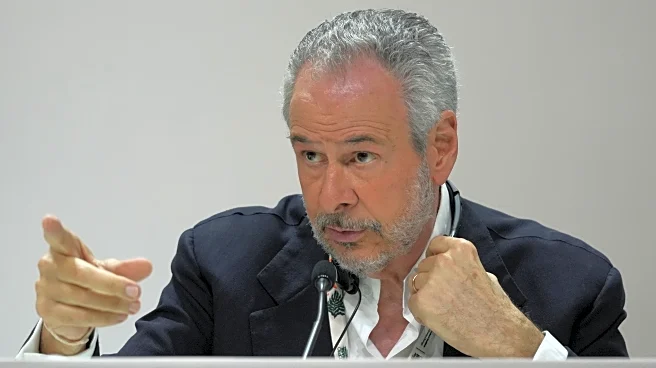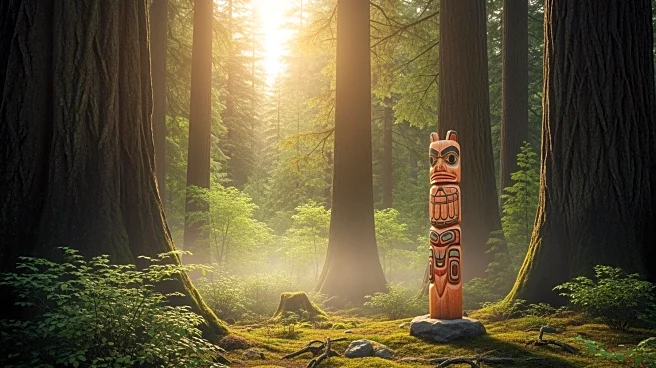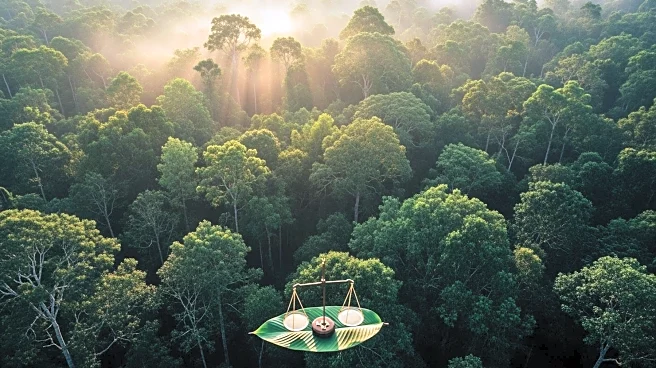SAO PAULO (AP) — As Brazil seeks to boost its environmental credentials by hosting the United Nations’ climate summit, a proposal to build a railway through the Amazon has threatened to tarnish that image
amid protests by Indigenous groups and environmentalists.
The Ferrograo railway project would transport commodities including corn and soybeans nearly 1,000 kilometers (621 miles) from a city on the southern edge of the rainforest to a port along a major tributary of the Amazon River. From there, commodities would be ferried to a larger port near Belem, the host city of the COP30 conference, for export to China and other trading partners.
The Brazilian government hopes to move forward with the railway once the country's Supreme Court rules on the legality of changing a national park's borders to allow construction and a congressional watchdog approves the plans. Protesters, including potentially affected Indigenous populations, took to streets and rivers in the Amazon this month to oppose it.
Currently, trucks carrying soybeans and corn through the rainforest must drive on roads that are unpaved in places, spilling grain that's pushed to the side of the road each day. The proposed railway would follow a similar route from the city of Sinop to the port of Miritituba on the Tapajos River, a major tributary of the Amazon River.
As of July 2023 — months after President Luiz Inácio Lula da Silva returned to office — local officials estimated the rail project would cost about 20 billion Brazilian reais ($3.8 billion). Independent analysts estimate the price tag will be one-third higher than that.
Asked about Ferrograo and other projects in Northern Brazil, where most of the country's Amazon lies, Transport Minister Renan Filho said: “You cannot become one of the world's biggest exporters without an infrastructure.”
Speaking on TV Band, Filho added: “Today, differently from the past, central Brazil has a lot of heavy cargo and that needs to be transported."
New projections are expected next year when Brazil’s Transportation Ministry hands in studies to the congressional watchdog. The government estimates that a single 170-car train could replace 422 trucks, reducing carbon emissions in the region, according to local media reports. On the other hand, any cutting of forests, no matter what for, often leads to more development. That happened across the Amazon as Brazil undertook major highway projects in the 1970s.
Since returning to office, Lula has made curbing deforestation in the Amazon a central part of his agenda — and has made significant progress. That effort seems to be at odds with a major train project.
Experts say about 15 Indigenous groups are scattered through the Ferrograo pathway and the waterways leading to Barcarena, the port near Belem where the grain is loaded on ships for export.
“The cumulative impacts (from Ferrograo), that’s deforestation, monoculture and toxics, show that comparing emissions is not enough,” Alessandra Munduruku, leader of an Indigenous population that could be affected by the railway, said in a statement. She and other activists claim anyone living in the basins of the Xingo and the Tapajos rivers could lose their homes to farms if the railway increases shipping and makes agriculture more lucrative.
Mariel Nakane, an analyst on Ferrograo at the non-profit Socio-Environmental Institute, told The Associated Press that Lula's administration has done little to consult with Indigenous groups.
“This administration said they would reach out to the Indigenous, but they just didn’t,” Nakane said, adding that there was also “zero dialogue” with Lula's predecessor, former President Jair Bolsonaro.
Government estimates show that the railway could carry up to 40 million metric tons (44 million tons) of soybeans and corn every year, doubling the current capacity through the road — with a potential of reaching 70 million metric tons (77 million tons). But the damage to rivers and their shores could push Indigenous peoples away, further increasing the potential for farming and deforestation, according to the Socio-Environmental Institute.
Chief Raoni Metuktire, 93, whose Kayapo people would be among those most affected by the construction of the railway, joined more than 300 Indigenous people and activists who took part in a flotilla of boats that traveled to Belem to protest the railway as the COP30 summit was getting underway. The conference is scheduled to end on Friday.
“I spoke to Lula and (French President, Emmanuel) Macron so they don’t drill oil around her and do not allow Ferrograo,” Metuktire told journalists in Belem last week.
Local populations near Miritruba say that soybean shipments are already contaminating the water and causing restrictions on fishing — effects that could worsen if a new railway increases shipping.
Melillo Dinis, a lawyer at the non-profit Kabu Institute who represents Indigenous groups, said opponents of Ferrograo are committed to fighting it in court and through administrative actions for as long as it takes. His organization is behind a class action suit against the Brazilian government seeking 1.7 billion Brazilian reais ($320 million).
“We will litigate this, we will have civil actions, we will take this to the government watchdogs, and we will also fight if we have to if there’s an environmental licensing phase,” Dinis told the AP.
Dinis says Indigenous protection groups wisely chose to walk out of government discussions on Ferrograo last year, as they understood their recommendations were not taken seriously by authorities.
“Dialogue with the Indigenous takes place in the villages, within the cultural model of each of those peoples. They thought a meeting in the capital, Brasilia, should sort this out,” Dinis said. “We were there for almost eight months. We offered them 100 pages with suggestions. They totally ignored them.”
___ The Associated Press’ climate and environmental coverage receives financial support from multiple private foundations. AP is solely responsible for all content. Find AP’s standards for working with philanthropies, a list of supporters and funded coverage areas at AP.org.
